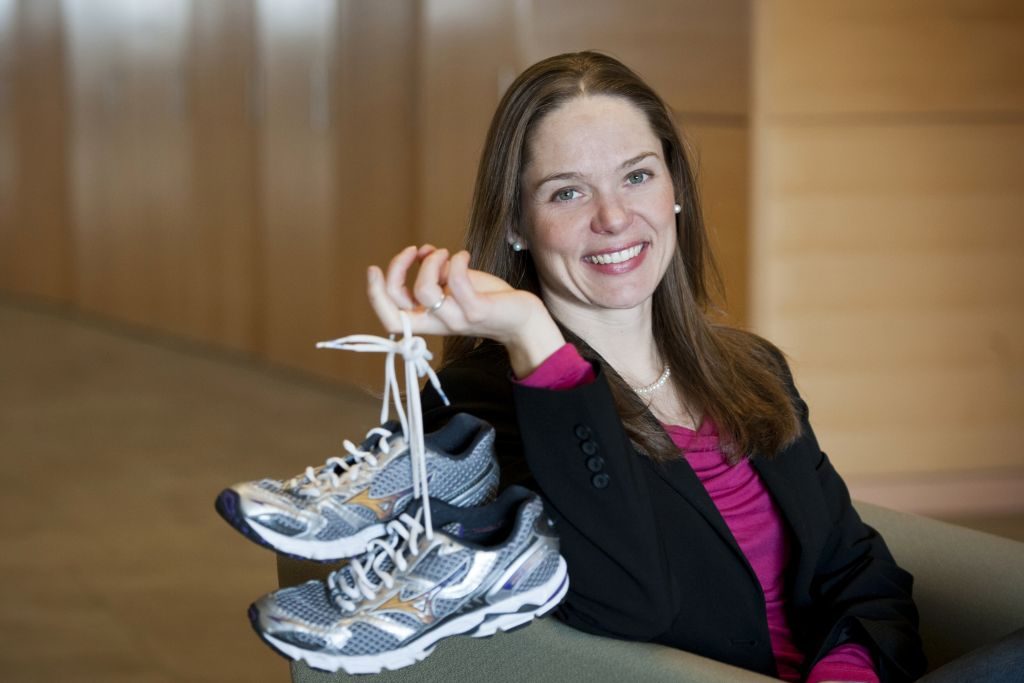A serendipitous moment lead professor Jane Yardley to diabetes research.
While working in parliament after finishing her master's degree in evolutionary anthropology in the UK, Yardley came across a tour guide who was volunteering for a study in her spare time. The study was centered on Diabetes Aerobic and Resistance Exercise and immediately piqued Yardley's curiosity, as she had always been interested in exercise and metabolism, and was thinking about going back to school. A PhD and a postdoc later, Yardley is now fully immersed in the world of exercise and how it affects patients with type 1 diabetes.
Working alongside Professor Normand Boulé, Dr. Peter Senior, and the Alberta Diabetes Institute (housed at the University of Alberta) one of Yardley's current projects, a clinical trial, is almost complete with two participants left to test in a study on how exercise affects those with type 1 diabetes who have recently undergone an islet transplant. This transplantation is a process that takes healthy islet cells from donor cadaveric organs and places them in the liver of diabetic patients to reverse the effects of insulin deficiency. The trial compares transplant recipients to people who have never had diabetes to test whether or not the transplanted islets are performing properly.
In another endeavor, Yardley and a team are testing whether or not the time of day affects blood glucose responses during exercise. She is also involved in a multi-site study titled Exercise Physical Activity and Diabetes Glucose Monitoring Protocol, or as less of a mouthful: E-ParaDiGM, which looks at how one exercise session changes blood glucose levels on the day of and day after the session in patients with type 2 diabetes. The E-ParaDiGM study is being spearheaded by Boulé at North campus, and performed on a number of University campuses, including UBC Okanagan, the University of Calgary, the University of Winnipeg, McMaster University, as well as here in Camrose, as a project that necessitates a large sample size.
Yardley has not been alone in her research, and along with her colleagues on North campus, has had local support. "I think half of the control participants for the transplant study are Augustana faculty and staff," Yardley admitted, laughing. "I'm getting really good at eyeballing height and weight!"
Augustana's funding for undergraduate research has also been helpful, as students Becca Dyck, Deanna Funk and Larissa Wilhelm have been fortunate enough to be involved in diabetes research, working alongside Yardley, and on their own projects centered around diabetes as well.
Becca assisted in a T1D boot camp that took place in Camrose last summer, attended by both patients and educators, to give hands-on experience in safely exercising with type 1 diabetes. Deanna wrote a review as a precursor to the islet transplant clinical trial, which was recently published in the NRC Research Press' journal of Applied Physiology, Nutrition, and Metabolism. Becca and Larissa recently presented their own diabetes research in Augustana's student academic conference; Becca, taking a look at cellular changes that improve glucose metabolism due to exercise, while Larissa studies whether or not exercise has a positive effect on depression in patients with type 2 diabetes. "Being diagnosed with a chronic disease can change an individual's life," Larissa says of her work "and through the use of exercise I may be able to help alleviate some of the burden."
Yardley knows well of the desire to "alleviate some of the burden" for patients. Specializing in type 1 diabetes means providing information for those living with the disease that is less prevalent than type 2, thus has less research and resources surrounding it. Yardley's ultimate goal is to get funding to develop more tools for clinical use for those who need to know more about exercising with type 1 diabetes, something an educator can point to in order to provide practical information to patients.
"When it comes to exercise," Yardley says "Explaining how to do something and then letting someone actually do it and experience it are two separate things. And for people with type one diabetes, having a safe environment in which to do it where they feel that they are being monitored and someone's going to be there if something goes wrong is also going to be very helpful."
This mentality informs professor Yardley's studies as she works towards suspending the gap between research and practice in creating useful tools for doctors and educators who support those with type 1 diabetes.
